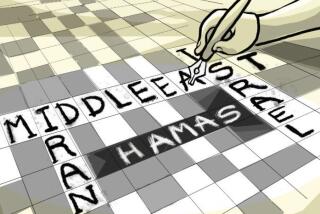Digging deep to show Muslim diversity
SAN FRANCISCO — SEVEN years ago, when the Asian Art Museum was getting ready to move from its old home in Golden Gate Park to its new Civic Center location, curators found an old rug rolled up on a shelf in storage. The huge carpet was one of 7,000 objects the institution’s founder, Avery Brundage, had collected, but the only information about the woolen rug that curators could find listed it as “miscellaneous office furniture.”
Yet even a cursory look at the carpet showed it to be a work of great beauty: finely knotted, expertly dyed a vivid red, with intense blue floral patterns highlighted in gold. Experts examined the rug and determined that it dated from the early 1600s and was probably produced in a workshop sponsored by the great Mughal emperor Akbar, who ruled what is now Pakistan and India.
“We found this not knowing what we had,” says Forrest McGill, the museum’s chief curator. “It had been sitting there for 40 years.”
Recently the carpet went on display for the first time, part of a small but exquisite show devoted to exploring the multifaceted realm of Muslim art. Called “Arts of the Islamic World From Turkey to Indonesia,” the exhibit, which runs through March 1, mines the museum’s collection to showcase 60 of its holdings, many of which have never been put on view before.
The show is also intended as a complement to the much-heralded exhibit “Afghanistan: Hidden Treasures From the National Museum, Kabul,” which runs from Oct. 24 to Jan. 25 at the museum, its only West Coast venue. The Afghan show features 228 objects -- all dating from before the advent of Islam -- that had been hidden in the war-torn country for 25 years and were rediscovered only in 2003.
McGill says that a traveling show from a country so closely associated with Islam raised the question about art created in the Muslim world, presenting the institution with a chance to dig into its own collection, which is best known for its extensive holdings of Chinese, Japanese and Indian art.
“Over the decades we have not put a lot of emphasis on the Islamic part of Asia, but it’s closely connected to the rest,” says McGill. “We want to emphasize the huge diversity of the Islamic world. There are huge, important Muslim communities in places like China.”
Within a century of the prophet Muhammad’s death in AD 632, Islam had spread from its Arabian homeland to a wide swath, from Spain in the west to Pakistan in the east. The art that resulted in these places blended local traditions with the strictures of the faith. The hadith, or sayings of the prophet, for example, contained warnings against artists depicting people or animals (only God can create life), which in turn spurred great creativity in abstract design and calligraphy. But, as the show strives to make clear, many idioms of Islamic art embraced figurative painting, particularly in Persia and Mughal India.
“In different cultures there are different understanding of these supposed restrictions and how strict you need to be,” McGill says.
Indonesia, for instance, the largest Muslim-majority country in the world, is represented by a collection of wayang golek stick puppets, including one depicting Amir Hamzah, an uncle of the prophet. The puppet presents a fierce-looking countenance, red-faced and bearded, wearing a prayer cap and a sarong -- a melding of two cultures through the unifying influence of religion.
The show spans time as well as geography. It jumps from Persian ceramics, including a lovely white dish from 17th century Iran decorated with a blue eight-point star enclosing a floral motif; to Mughal India, captured in 19th century photographs and minutely detailed action paintings and portraits; to the 21st century, with works by contemporary artists from places such as China and California.
Although many of the objects are overtly theological -- such as decorated Korans and inscribed Chinese incense burners -- others are resolutely secular. Consider the work of Pakistani painter Abdur Rahman Chughtai, who died in 1975. His neo-realistic portrait of a young man putting aside a book to swoon in ecstasy over an absent lover manages to be decorous and sensual at the same time.
One contemporary artist is Mohamed Zakariya, who was born in Ventura and became fascinated by Islamic art on a trip to Morocco. He converted to Islam and studied Arabic calligraphy in Turkey. The show features Zakariya’s rendering of an Ottoman poem called “Garden of Happiness”: black cursive script, set against a background of biomorphic blots of color -- pale green, yellow, orange and black -- that suggest Abstract Expressionism.
Another working artist is Haji Noor Deen, a Chinese Muslim who painted a hanging scroll with a large Chinese character meaning “peace,” which itself is composed of the same word in Arabic in tiny calligraphy.
“We want people to remember there are plenty of Muslim artists working today,” says McGill. “These traditions haven’t stopped.”
“Arts of the Islamic World From Turkey to Indonesia,” Asian Art Museum, 200 Larkin St., San Francisco. $12. Ends March 1. (415) 581-3500, www.asianart.org.
More to Read
The biggest entertainment stories
Get our big stories about Hollywood, film, television, music, arts, culture and more right in your inbox as soon as they publish.
You may occasionally receive promotional content from the Los Angeles Times.










